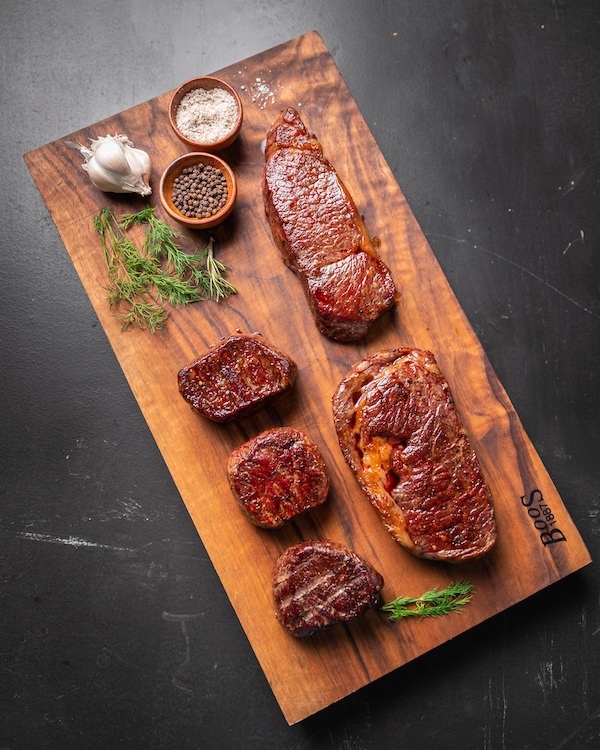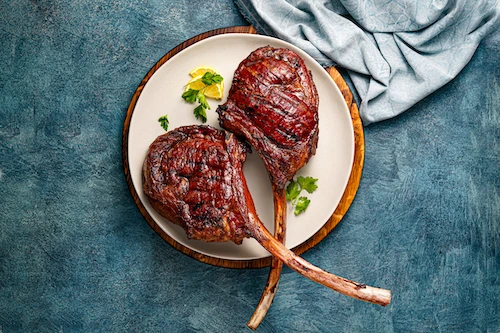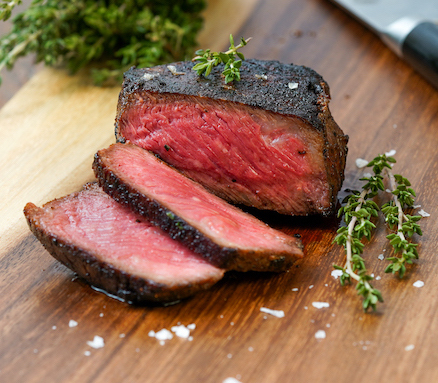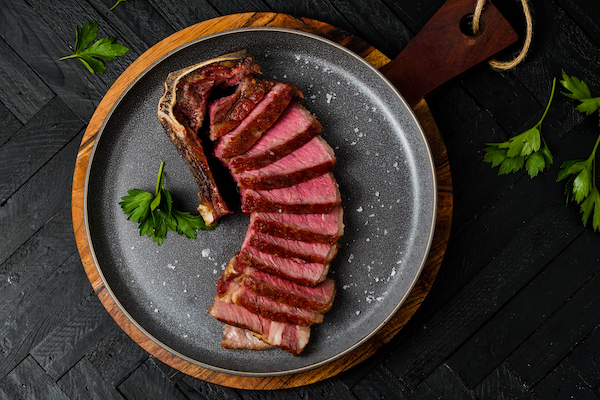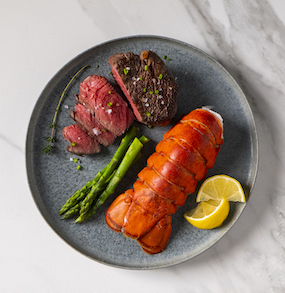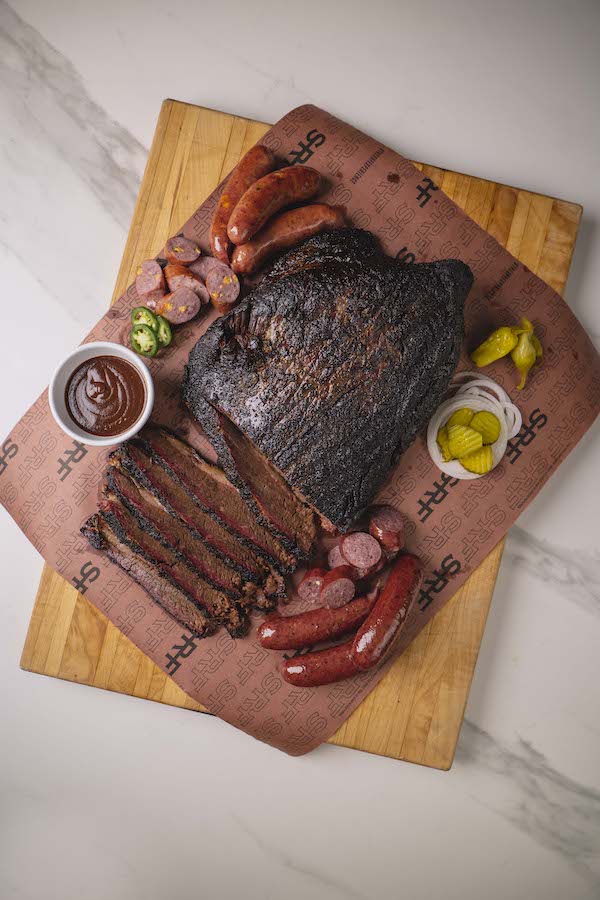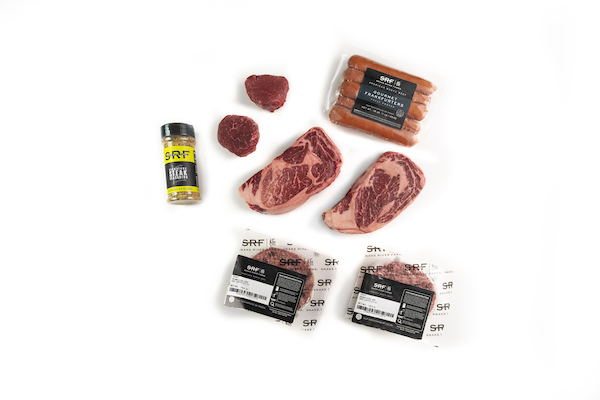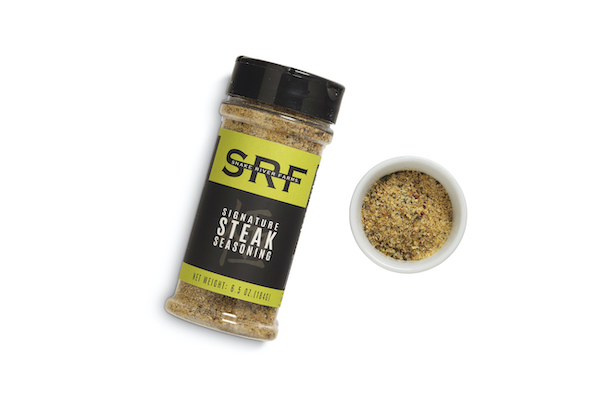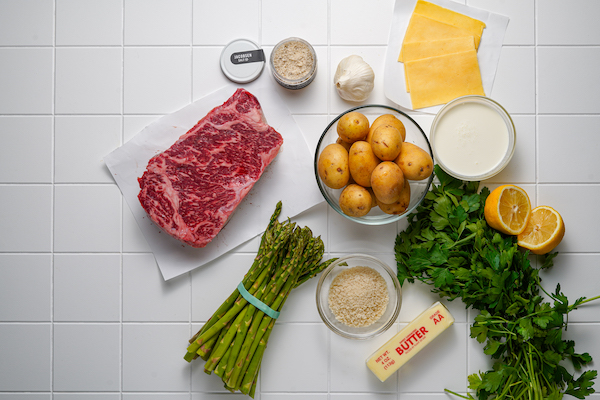Sea to Table – Adding Surf to SRF’s Turf
About Sea to Table
The Dimin’s business started as a high-end seafood purveyor for restaurants, but the family had a vision to reset the seafood distribution model. They developed relationships with commercial fishermen and created a direct channel for chefs to select the perfect seafood for their menus. Once the restaurant business was in place, Sea to Table turned their attention to seafood loving consumers.
We sat down with Sean Dimin of Sea to Table and learned his seafood program aligned beautifully with our quality standards for beef. Sea to Table has systems in place to ensure their seafood is wild-caught in domestic waters, sustainable, traceable and free from hormones, antibiotics and GMOs.


“Our lobsters is harvested and landed in the state of Maine. This is an iconic fishery with many longstanding traditions.” says Sean, “You can confirm the origin by checking the traceability sticker on each pack. You’ll find the specific landing location and catch method.”
Sea to Table is a Certified B Corp, which authenticates the company meets verified high standards for social and environmental performance, public transparency, and legal accountability to balance profit and purpose. The third-party certification process is rigorous and demonstrates Sea to Table’s commitment to suppling the best seafood using socially and environmentally practices.
From its people, to its practices, to its strong relationships with Maine lobstermen, Sea to Table is an ideal partner and supplier for Snake River Farms’ first offering of seafood. We’re excited to work with Sean and his team to bring our customers something special this holiday season.
CAUGHT FRESH, FROZEN IN A FLASH
The lobsters supplied by Sea to Table, like our beef, ship frozen. According to Sean, “Most fish you buy is previously frozen, whether it’s advertised that way or not. The key to high quality frozen lobster is in the freezing process.”
Sea to Table’s lobsters are caught fresh in the frigid waters off Maine’s shoreline, then flash frozen at extremely low temperatures to capture the flavor and preserve their meaty texture. This is a process that closely mirrors the method used to flash freeze Snake River Farms beef.

Sean notes that lobster meat maintains its integrity exceptionally well when frozen. “Ideally, you thaw these gently overnight in your fridge, but lobster also holds up perfectly with a speed thaw. Just submerge the lobster tails in cold water,” says Sean.

FROM ORDINARY TO OPULENT
Just say “lobster” and mental images of gourmet meals come to mind. This might be a candlelit dinner in a white tablecloth restaurant or a seaside stand with lobster rolls. Strangely enough, the history of lobster in the U.S. started from very humble beginnings.
There was a time when lobsters were so bountiful on the coastlin; they were said to wash up on shores in piles two feet high. Lobster was an early food source for the first European settlers in North America. The cheap and plentiful protein was known as a poor person’s food and were used to feed prisoners and servants. There is written evidence that workers had clauses in their contracts to limit lobsters to two meals a week.
In the 1880s, restaurants in Boston and New York City began offering lobster on menus and epicureans began to see the shellfish in a new light. Prices began to rise and the lobster industry received a financial boost.
By the time World War II began, lobster was a highly prized, gourmet treat. It was plentiful and not rationed like many wartime delicacies. The booming economy created wealth, and the lobster was consumed at an accelerated rate. The once despised crustacean had established itself as one of the most desirable dining pleasures in the U.S.
LOBSTER LOWDOWN
There is a secret side to lobsters that make them a bit mysterious. Here are a few lobster facts to chew on:
Amazing Anatomy
A lobster’s vital parts are not found in obvious locations. The brain in located in its throat, the nervous system is in its abdomen and teeth are in its stomach. Lobsters taste with their legs where chemosensory cells are found.
The green substance you sometimes find in a cooked lobster is called tomalley and is a digestive gland. The tomalley is edible and some consider it a delicacy, while most folks choose to remove it.
Under Pressure
A lobster’s claw is a powerful appendage that can generate pressure up to 100 pounds per square inch. One of the claws is larger than the other. This is called the crusher claw and is used to break open clams, mussels and anything with a protective shell. The other claw, the ripper or quick claw, is used to tear softer creatures like fish or worms.
Shell Game
Harvesting lobsters creates a large quantity of shells. An industrious professor at the University of Maine developed a golf ball made with a core of lobster shells. The biodegradable golf balls are used on cruise ships or at courses located near bodies of water.

